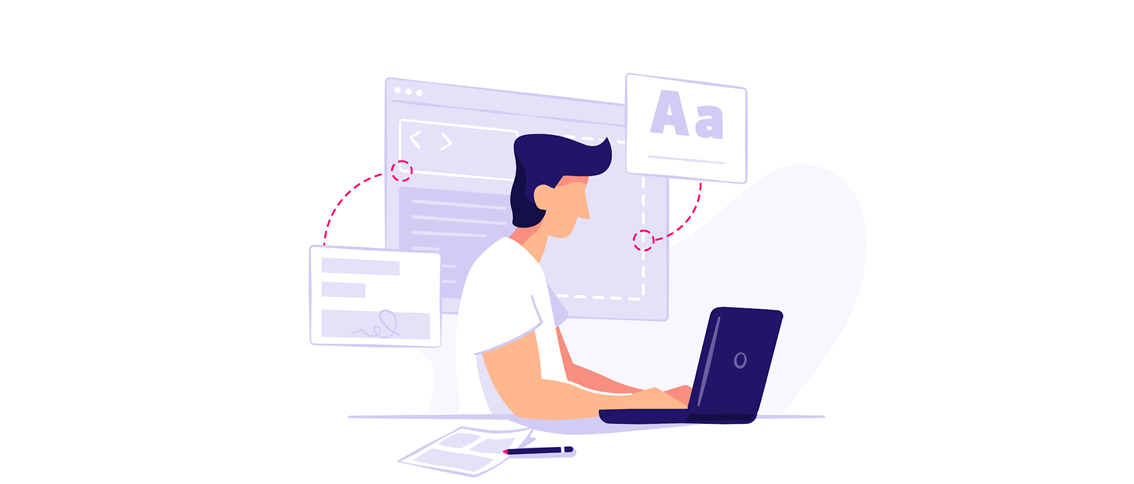
Understand technical SEO terms and how to monitor your backlinks
Are you sure you are getting the most out of your link building techniques and efforts? It is important to know technical SEO terms that may be the reason why you are not getting the full value from your backlinks. They are explained here, along with tips for monitoring your links.
Link building is an essential discipline in SEO work. It is among the most important factors for achieving successful rankings in Google’s search results. Typically you expend a lot of resources on creating backlinks to your website, so you obviously want to get the full value for your link building efforts.
There are many different ways to get backlinks to your website. In the eyes of Google, you are cheating unless the link shows up by itself because you have great content that is worth linking to. Even so, those websites are few and far between that don’t attempt actively to get backlinks that can boost their rankings.
Getting links takes resources – so monitor your backlinks
Regardless if your pay for your links, do outreach, write posts as a guest blogger, or simply publish good content worth linking to, there is little doubt that it takes resources.
A link has great value, because it can increase your rankings in Google’s organic search results – but also because it takes time, effort, and sometimes money to get them. Therefore, you should always make sure you get the most out of them.
You can either do it manually, or you can choose a monitoring tool that can do the work for you automatically. The latter solution is easier, but no matter what, it makes sense to educate yourself on the factors that can influence the value of a link.
Technical SEO terms that can affect link value
If you want the full value from backlinks pointing to your website, it is important that nothing is blocking the transfer of the value. First of all, this requires that the website linking to you has been configured properly. The ultimate to-do for your own SEO is that you are on top of the technical things as well.
Below, you will see which factors you must be particularly aware of to ensure you are getting the full benefits from your links.
Indexing status
The first thing you should do when you receive a link is to check if the URL linking to your domain has been indexed. If it hasn’t been indexed, the link has no value. There can be several reasons for this – typically, Google has not yet come across the specific subpage with the link. In that case, you just have to wait for it to be indexed.
However, more serious errors may be the cause for the domain not yet being indexed. For instance, the page could be set to noindex, or the robots.txt file may not be allowing Google to crawl the site.
404 and redirects
A redirect is a rerouting from one URL to another. They are often used when a homepage is relaunched, or if a subpage is removed and replaced with another one with a different URL.
However, creating redirects is not just done for the sake of the user. If you have links pointing to a 404 page, the value transferred by the link will be lost. This is because the dead page is not redirected to a new URL. In practical terms, you risk giving up important link juice, of you have incoming links from external domains pointing to dead pages.
Typically, we distinguish between two types of redirects – 301 redirect and 302 redirect. 301 redirect is a permanent redirect that tells the browser and Google that the specific URL has moved permanently to a different web address. A 302 redirect is a temporary redirect for when you want to redirect a specific URL to a different subpage on your website for a period of time.
See also Redirect modules for PrestaShop, where you can add redirects easily
Anchor text
Anchor text is the actual text you are clicking on when following a link. It is often meant to give users an indication of the topic of the destination website they get to by clicking on the link. At the same time, it helps give Google an indication of the topic of the URL.
It is important that there are no changes made to the anchor text linking to your website. If it contains a search term you want Google to index the URL by, it is important that the search term stays in the anchor text.
Rel attributes
The rel attribute enables you to send a signal to Google about the relationship to the linked content. This may influence how much link value is transferred – and if any is transferred at all.
Nofollow: This value is an indication to Google that you can’t guarantee the content on the homepage linked to, so they should not pass on any link value.
Sponsored content: With this value, you are signaling to Google that the link is sponsored. This is often used for paid advertising, affiliate links, or advertorials.
User-generated content: This value enables you to signal to Google that there is a link not created by you, but rather a user has created it. It is typically used in comment fields and in forums.
Keep track of your links
If you want to make sure you get the full value from your links, you may want to use a tool that monitors them automatically. Several technical factors can influence the value of your, and it may be difficult to keep track of them manually.
There are several tools you can use to monitor your links. Below is a brief introduction to the most popular ones on the market:
- Linkody: Linkody is a fairly basic tool that enables you to monitor if your backlinks are indexed. Available from $13.90 a month.
- Linkcheetah: Linkcheetah is a little more advanced. Here, you can monitor indexing, redirects, and HTML headers. Available from $49 a month.
- SE Ranking: SE Ranking monitors HTML headers and enables manual correction of the price for a link and updating link status. Available from $39 a month.
- Monitor Backlinks: Monitor Backlinks is a simple tool that enables you to monitor HTML headers and indexing status. Available from $89 a month.
- LinkOkay: An advanced tool that monitors HTML headers, indexing status, and enables manual status updates for incoming links. Available from $0 a month.
- Traxr: Traxr is a new Backlink Monitoring tool with more features than the other tools. Here you are able to monitor HTML headers, response headers, redirects, rendering, canonical tags, anchor text changes, and much more. Available from $1 a month.
There is a free 7-day trial, where you can track all the links you want.
You have the option of doing manual checks yourself, and at the same time, you can track how much you are paying for your links by entering a price for the paid link you are tracking.
Why monitor your links?
If you have a successful website, you are surely spending both resources and money on creating backlinks. With a monitoring tool, you can monitor your links, so you can rectify the problem if you run into challenges affecting the link value.
If your link is removed from a page, you will see it immediately, and if you are using a tool for it, you will receive a warning, e.g. by e-mail.
I hope you enjoyed the article. Don’t forget that SEO is much more than just backlinks, but they will still remain a crucial factor for getting to the top ranks.





